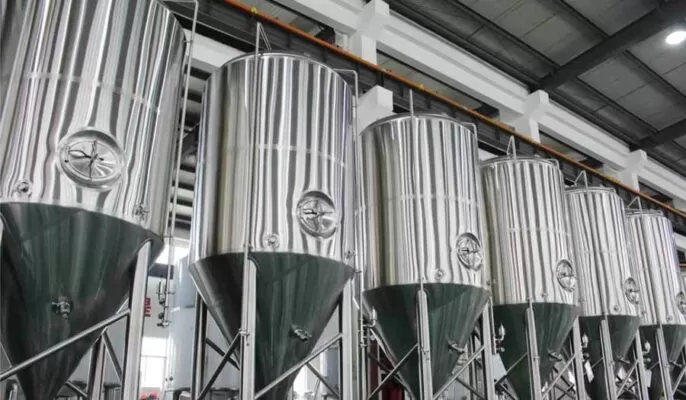A beer fermenter is also called a jacketed fermenter or conical fermenter. The basic process is that after the wort is cooled by the refrigeration equipment, yeast is added and transported to the fermentation tank to start fermentation. The fermentation stage is especially critical to the outcome of the brew, as any unfavorable temperature level (too high or too low) can ruin a batch, altering the final flavor and aroma, and resulting in a poor brew.
In the world of fermentation, temperature control is an essential element of producing highquality beer, wine, or spirits. A jacketed fermenter is a type of vessel used in the fermentation process that allows for precise temperature control, resulting in a better end product. In this article, we will explore the workings of a jacketed fermenter and the benefits it provides to brewers and winemakers alike.
The Importance of Temperature-Controlled Fermentation Tanks
Winemaking is an sensitive process that requires temperature to be controlled within a narrow numerical range. Typical wine fermentation temperatures are between 40oF and 80oF. It is often difficult to keep brewing conditions within this narrow range in larger fermenters using simple cooling fans and baths. In these cases, a temperature-controlled fermenter is the better choice.
What is a Jacketed Fermenter?
Modern fermentation includes cylindrical and conical fermenter fermentation and continuous fermentation. The inner liner of the beer fermentation tank is made of international standard high-quality stainless steel material, polyurethane high-pressure foam insulation, and the mirror surface inside the tank body can reach 0.4μm, which meets the requirements of automatic control PLC automatic cleaning and disinfection.
The beer fermentation tank is equipped with a cooling jacket to meet the technical standards of various countries in the world. At the same time, it provides a variety of corrugated channel heat exchange methods such as honeycomb jackets and arc channels to meet the needs of different media and pressure heat exchange technologies.

How Does a Jacketed Fermenter Work?
The fermenter cooling jacket is made of a flexible material in which the coolant channels run. When wrapped around the brewing barrel, the coolant flowing within the channels of the jacket will absorb heat from the brewing liquid through a simple heat exchange process.
Fermenter cooling jackets are an integral part of the brewery cooler setup. Industrial chillers help re-cool the heated coolant returning from the tank cooling jacket in preparation for recirculation. Chillers keep the coolant at the most wine or beer fermentation tank temperature.
Some advantages of using a cooling jacketed fermenter:
- adjustable temperature levels allow for more even cooling and fermentation
- Prevents accidental contamination because the integrity of the barrel has not been tampered with
- Easy to install and maintain
- Ability to use various temperature-sensitive yeast strains.
Conclusion
In conclusion, jacketed fermenters are an essential tool for brewers and brewers to produce premium beer, wine, or spirits.
The precise temperature control provided by jacketed fermenters allows for consistent flavor and aroma and enables the use of temperature-sensitive yeast strains. Additionally, jacketed fermenters are more efficient than traditional fermentation methods, making them an excellent investment for any commercial or home brewing operation.




